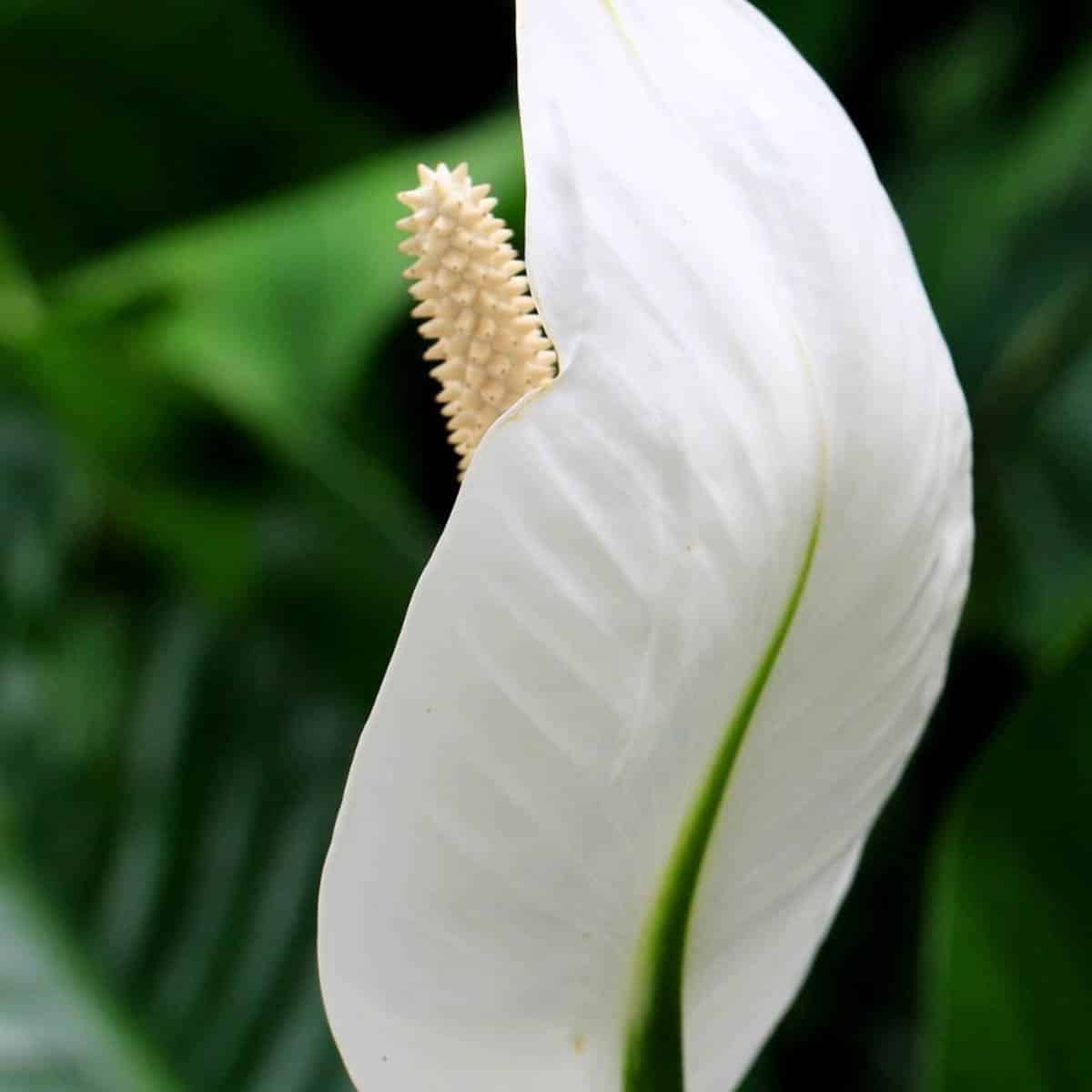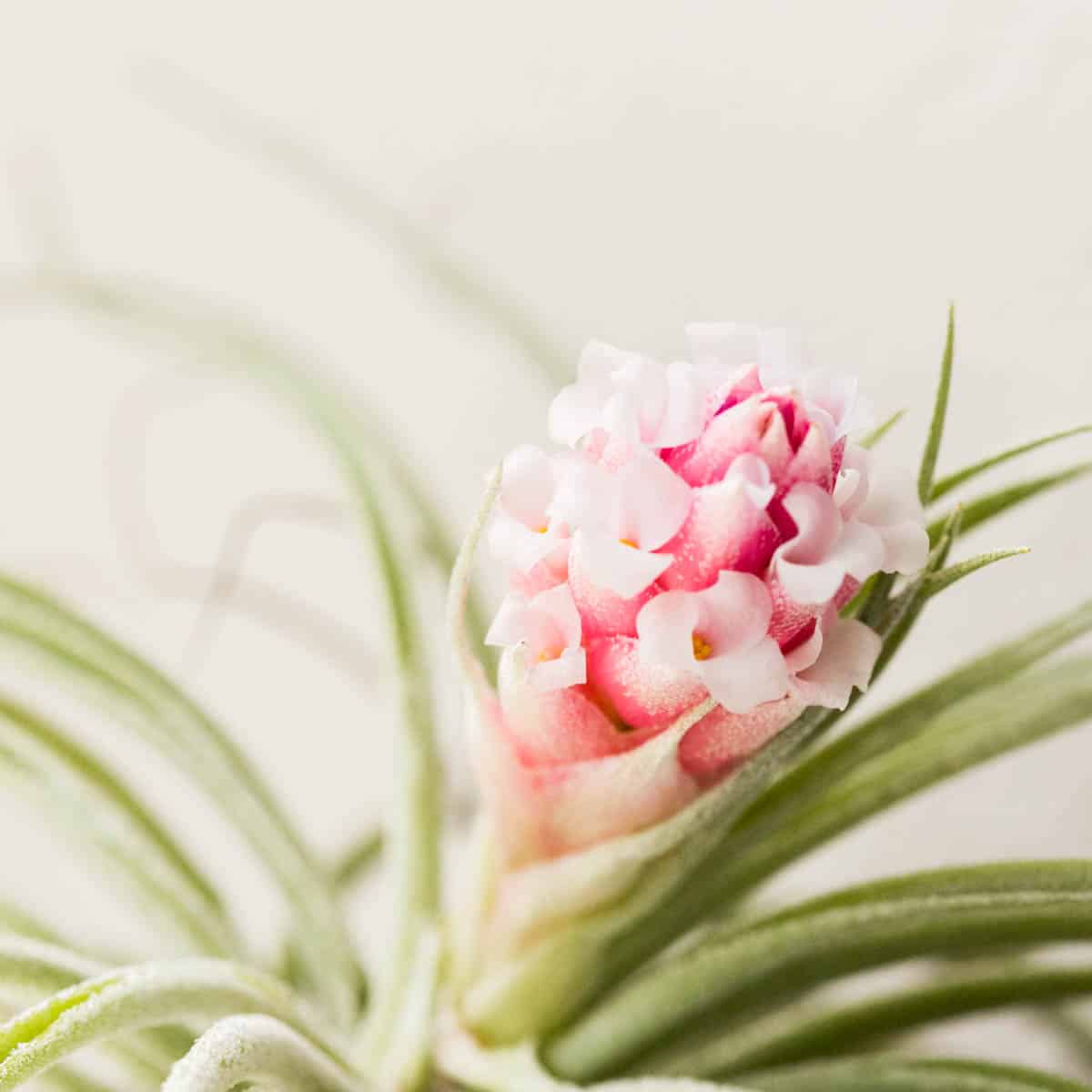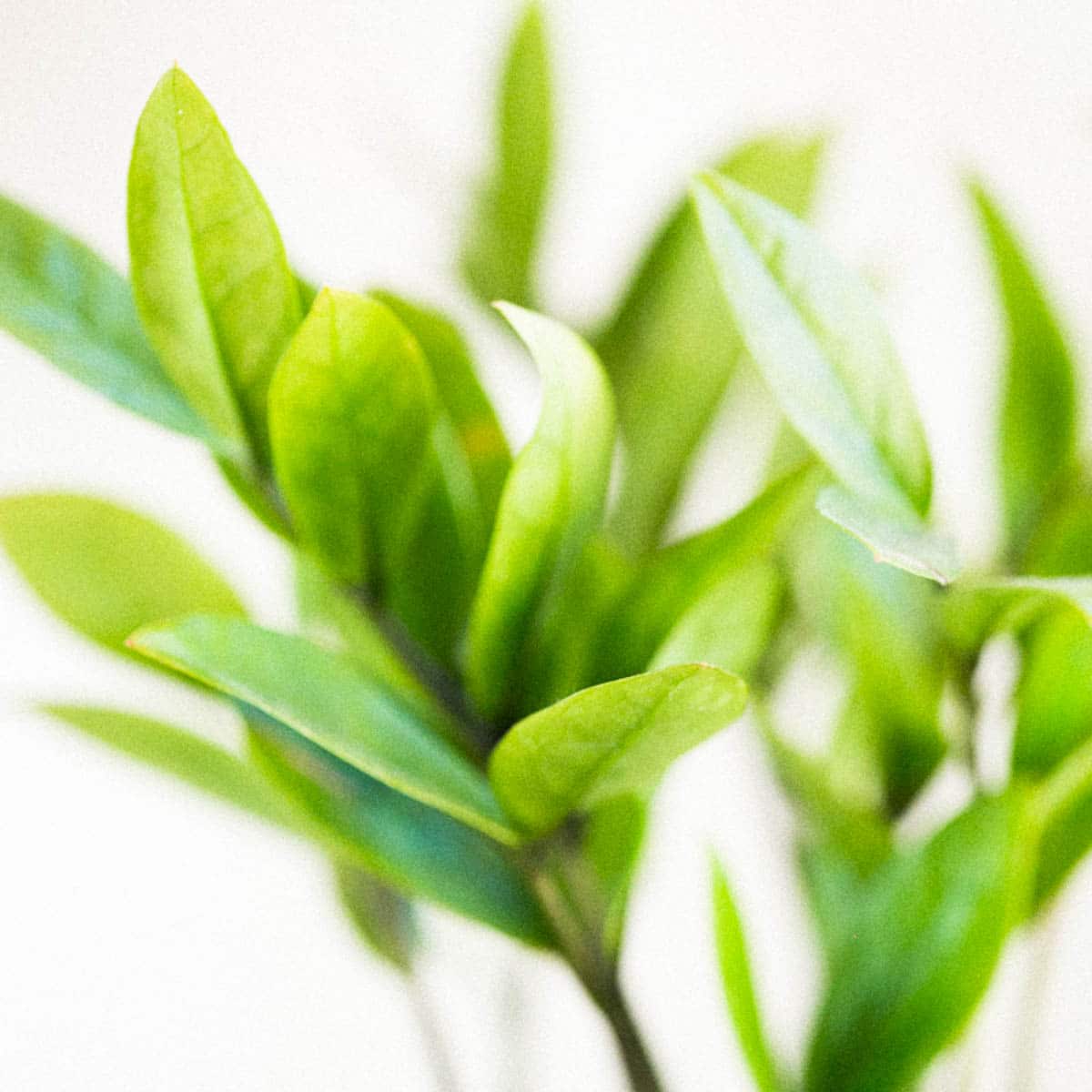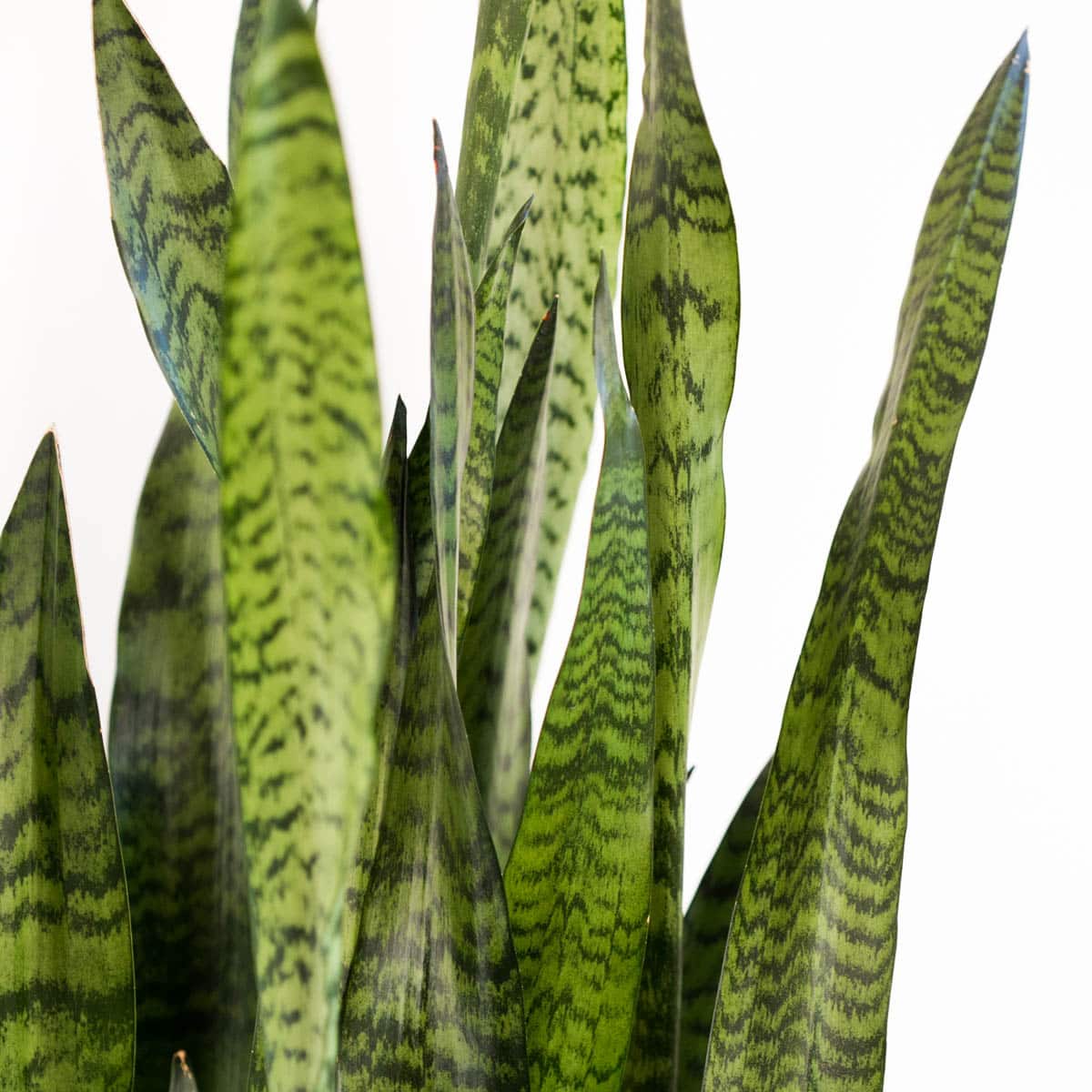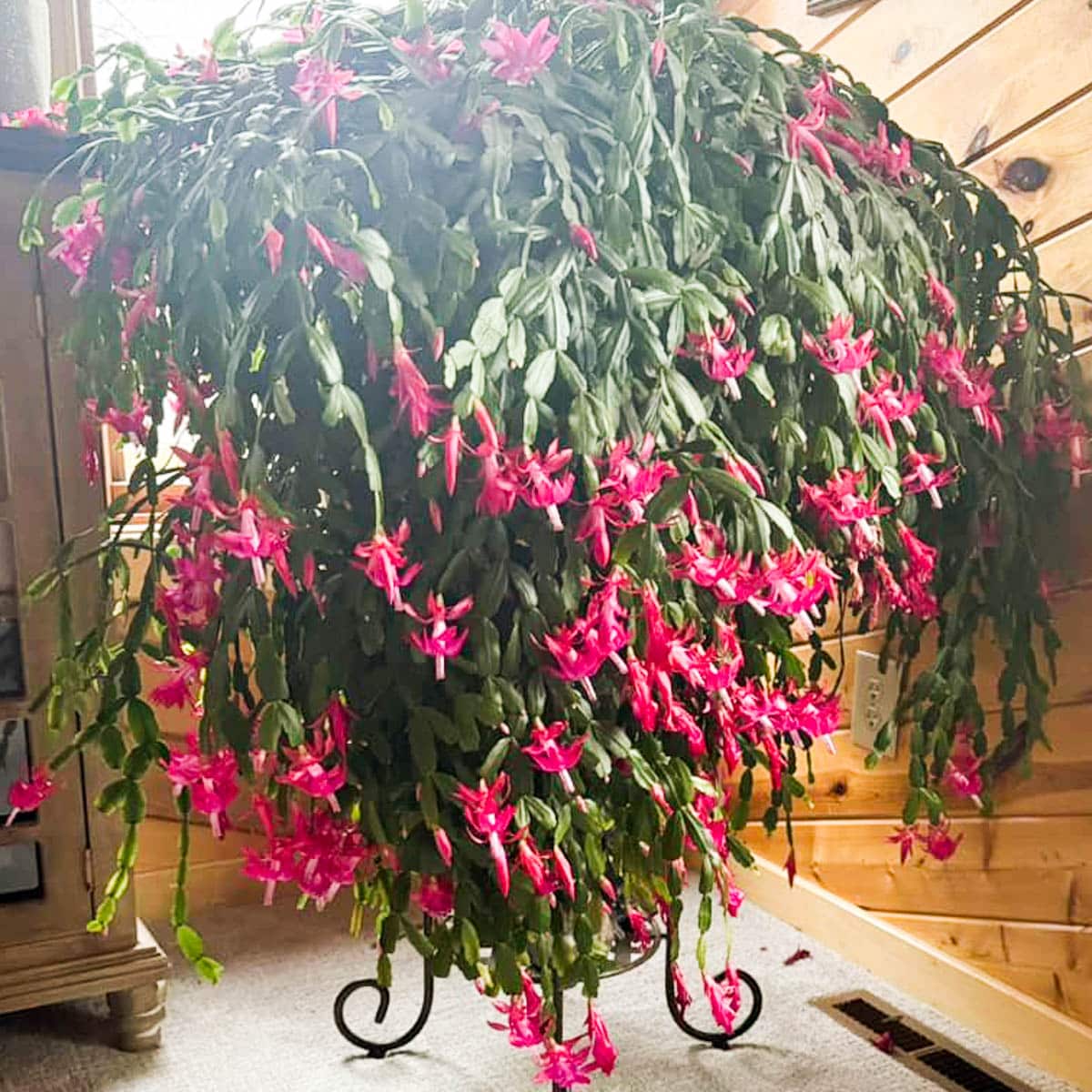5 Reasons Your Spider Plant Has Brown Tips + How To Fix It
Learn exactly what you need to do if your spider plant has brown tips right here…
With their elegant leaves and vibrant green hues, spider plants are a popular houseplant. One of the most common problems with these easy-growing plants are brown tips on the end of the channeled leaves.
These brown leaf ends can give the lush houseplant an unsightly appearance.

The good news is there is always a specific underlying cause to the unsightly brown foliage. The most common causes are:
- Too much sun exposure.
- Lack of humidity.
- Improper watering.
- Too much fertilizing.
- A water source with chemicals in it.
Let’s jump into all the reasons and diagnose the damaged leaf ends on your spider plant!
About Spider Plants (Chlorophytum comosum)
Naturally growing on coastal regions of South Africa, spider plants are one of the easiest houseplants you’ll ever grow. They will brighten up any room with their colorful green foliage.
As a bonus, they’re surprisingly easy to propagate if you want to add to your houseplant collection or give some away to your family or friends.
But, as with most plants, you’ll occasionally face common problems that you may need help fixing. One common problem that you might encounter with your indoor spider plant is brown tips on the very end of the leaves.
Let’s look at some of the reasons your spider plant leaf tips might be turning brown.
Hi there! If we haven’t met, my name is Jamie. I’m a life long plant enthusiast with a background in environmental science and photography. I’m happy to help you trouble shoot your spider plant today!

Most Common Reasons For Brown Tips On Your Spider Plant’s Leaves
Here are the most common causes and how to fix the problem!
Too Much Sun Exposure
Did you know plants can get sunburned as easily as humans can? This is particularly true when growing indoor plants because they live in a protected environment and are more vulnerable to being burnt.
Many of the plants we grow indoors originate from rainforest areas, where they grow as part of the undergrowth and are protected by the tree canopy above.
So, if your spider plant is starting to show brown on the ends of the foliage, check to see whether it’s being exposed to direct sunlight coming in through a window.
The sun coming through glass is magnified and can have an even greater intensity than when your plant grows in it’s native environment.
*This post contains affiliate links to Amazon.
How To Fix Too Much Sun:
Harsh sun rays are easily fixed if you move your plant away from the window so that the direct rays of light can no longer reach it.
Bright and dappled indirect sunlight will make your spider plant perfectly happy, and there will be no more brown leaves if too much direct sunlight was the culprit. (Simply pinch or cut off the burnt leaf tips).
If the specific room makes it difficult to place the plant far from the window, hang some pretty light diffusing curtains or blinds to diffuse some of the sun’s harsh rays. Remember, a spider plant craves bright light that is indirect – not harsh, direct sun rays.
Lack Of Humidity
Did I mention that many houseplants originate from rainforest areas? This means they love a fair amount of humidity, and spider plants are no exception.
Low humidity environments can occur when you control the inside temperature by running the heater or air conditioner. Constantly running heating and cooling will suck the moisture right out of the air. (Of course, this is often inevitable!).
Both will dry out the air considerably, and your lovely spider plants will start to suffer. They’ll tell you they’re not happy when the ends of the leaves turn an unsightly color.
How To Fix A Lack Of Humidity
Increasing the humidity around your spider plants is relatively easy. First, considering moving your plant to a more humid environment, such as the bathroom or kitchen.
You’ll find that houseplants love these rooms because of the extra steam created when you use the shower or cook on the stove.
However, if that’s not a viable option, there are several other ideas you can try. Consider investing in a humidifier for the room where your plants live.

Another easy option is to fill a spray bottle with water and mist your plants whenever the air seems dry. You may only need to do this once or twice a week to keep your spider plants happy.
Or, you could create a humidity tray for your plants. Simply find a suitable tray and place some stones or pebbles in the base. Add some water halfway up the level of the rocks.
Place your pot plants on top of the pebbles. As the water evaporates, it will increase the moisture around your spider plant. The pebbles will prevent your plant’s roots from sitting in the water.
Under Or Over Watering
Getting the watering requirements right can be challenging when you’re spider plants. While these plants are pretty hardy, they won’t appreciate it if the soil stays dry for too long and they don’t get enough water.
On the other hand, these tropical plants can’t tolerate soggy soil, either. Soggy soil can cause root rot and spell the demise of your plant.
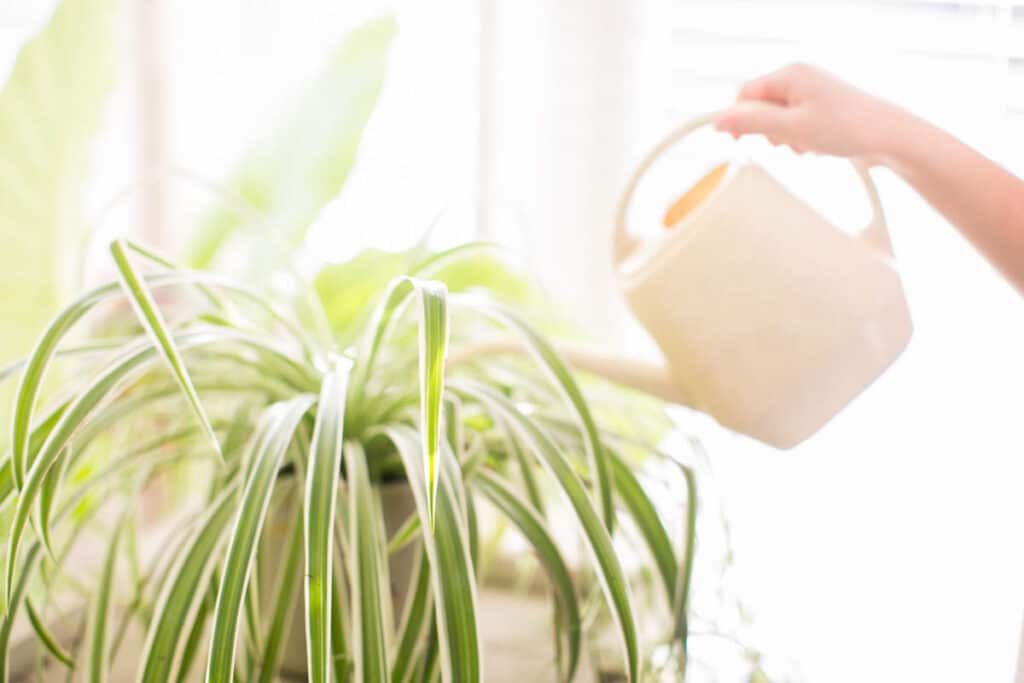
(Get our complete guide to watering spider plants here!)
How To Fix Under Or Over Watering
Finding a remedy for water stress is easy. Spider plants don’t like their soil to dry out completely. So, you should water your plant whenever the top one or two inches of soil feels dry.
You can test the moisture of the soil either by poking your finger in it or using something like a wooden chopstick or popsicle stick. If the stick comes out dry, then your plant needs water.
However, if the soil clings to the stick when you pull it out, there is still enough moisture in the soil.
You can also use a soil moisture meter like this one.
Giving your plant too much water should be avoided at all costs. Over-watering can lead to root rot and fungal disease, which are not easy to fix. Make sure there are plenty of drainage holes in the bottom of the pot, and don’t allow your plant to sit in a saucer of water.
Get the best watering can for indoor plants here!
Excess Fertilizer
Giving your plant too much fertilizer can also cause the leaves to turn brown. Fertilizers can cause a salt buildup in the soil, which can burn the roots.
How To Fix Over Fertilizing
The best way to remove excess salts from your spider plant’s soil is to flush the entire pot with water until the excess water runs freely from the drainage holes.
Or, remove the plant from the pot, shake off some of the soil, and re-pot your plant into some excellent fresh soil.
Be mindful of how often you fertilize spider plants- they are not a heavy feeder. We recommend fertilizing monthly during the growing season (early spring to mid-summer).

Water Source Has Chemicals In It
Spider plant leaves can turn brown if the water source they receive has too many chemicals. Too much fluoride, sodium, and high calcium levels can damage your plant (and even kill it!).
You also want to consider the quality of your tap water. If your water quality contains excess fluoride, consider using either distilled water or rainwater instead. Even filtered water will work to keep your plant happy.
If you suspect the water source is damaging your plant, re-pot your plant in fresh soil, then transition to a water source free of harsh chemicals.
A good water source is essential to proper plant care. Please read our full article on the best water for houseplants here.
Should You Cut Brown Leaf Tips Off A Spider Plant?
Since the brown ends are dead, you can easily snip them off with a clean pair of sharp scissors or pruners. The affected leaves will not be harmed with this quick removal of the spider plant’s leaf tips.
Or, if there are just a few leaves with brown ends, there’s no harm in just removing the entire leaf from the plant by pulling it gently from the base. This won’t harm the rest of the plant.

Learn how to properly transplant your spider plant here.
How To Make A Spider Plant Thrive
It’s relatively easy to help your spider plant thrive. All you have to do is:
- Place it in a spot where it gets dappled or indirect light
- Water it when the soil feels dry
- Provide a good environment with high humidity levels
- Feed during the active growing season with some slow-release fertilizer or monthly with a liquid fertilizer
Put your plant under a cool shower every six months or so to remove any buildup dust on the leaves and boost it. Ensure you allow the excess water to drain well before placing it back in its original spot.
I hope this has helped you in your search to heal your spider plant! If you have any questions please feel free to drop them in the comment box below- I’ll respond as soon as possible.
Happy growing! -Jamie

